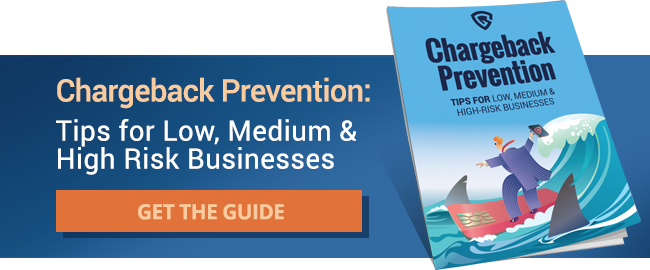Proven eCommerce Fraud Protection
Fraud is a serious problem for e-commerce businesses. Every time a merchant loses revenue due to fraud-related chargebacks, they're losing far more than the cost of the original transaction. The costs of acquiring the customer, marketing, and shipping the product are casualties as well, along with payment processing fees and overhead expenses.
The total amount lost is often up to two to three times the transaction amount. Fraud prevention is key to the health of any business in the e-commerce sector.
On average, online merchants are losing 8% of their annual revenue to fraud, and rates of e-commerce fraud keep on growing. It's an unfortunate fact that once a company falls victim to e-commerce fraud, they're more likely to be targeted again. Once a vulnerability has been identified, fraudsters will keep exploiting it until the company catches on to them, perpetrating the same type of fraud as many times as they can. It is therefore extremely important for companies to be smart about taking precautions against fraud.
The Various Types of E-Commerce Fraud
There are two main categories of e-commerce fraud that result in chargebacks to the merchant:
- True fraud. This refers to using stolen identities or payment credentials to make an online transaction.
- Friendly fraud. Nearly 80% of chargebacks may be due to so-called "friendly fraud." This refers to situations where the original online purchase was not fraudulent, but due to confusion, dissatisfaction, or impatience, the customer disputes the charge with their credit card company instead of asking the merchant to issue a refund or otherwise resolve their issue.
 A third cause of chargebacks is merchant error. These types of chargebacks are not due to fraud on the customer's part and can be eliminated or reduced by improving internal policies and procedures
A third cause of chargebacks is merchant error. These types of chargebacks are not due to fraud on the customer's part and can be eliminated or reduced by improving internal policies and procedures
True Fraud Prevention
Merchants may combat fraud with external tools and services provided by outside companies, or by implementing internal strategies and protocols designed to screen out and eliminate the potential for fraud to occur.
Some of the external tools merchants can use include:
- Fraud prevention tools designed to identify stolen or compromised credit cards
- Chargeback insurance
- Address verifiers
The following are some of the internal protocols that can help reduce fraud:
- Activating AVS or CVV to screen out stolen cards
- Manually investigating address mismatches and overnight shipment requests (many fraudsters use overnight shipping to rush orders before the merchant can identify and act upon signs of fraud)
- Verifying addresses by calling or emailing customers when needed
Tips & Strategies to Prevent Friendly Fraud
Friendly fraud is difficult to prevent. By definition, every instance of friendly fraud arises from a legitimate transaction—there's no way to predict when it will occur. However, there are safeguards that can mitigate its impact on your bottom line.
The first and most important line of defense is your customer service. Here are three things to focus on:
- A clear and comprehensive refund policy that makes it easy for customers to return unsatisfactory products and request a refund
- A fast fulfillment system
- An easily-reachable and attentive customer service staff
These can all go a long way towards encouraging customers to work through their issues directly with your company, rather than complaining to their bank and requesting a chargeback.
 You should also be sure to track return shipments so that refunds can be issued promptly, use clear transaction descriptors that reference your store name so customers don't get confused when they review their credit card statements, and set realistic expectations for your products. Misleading marketing can lead consumers to feel deceived and taken advantage of, making them more likely to take their disputes directly to their bank instead of the merchant.
You should also be sure to track return shipments so that refunds can be issued promptly, use clear transaction descriptors that reference your store name so customers don't get confused when they review their credit card statements, and set realistic expectations for your products. Misleading marketing can lead consumers to feel deceived and taken advantage of, making them more likely to take their disputes directly to their bank instead of the merchant.
It can be worthwhile to blacklist customers who perpetrate friendly fraud. A customer who uses chargebacks as a shortcut to getting their money back, and doesn't care about the disproportionate impact on the merchant they're shopping from, is rarely worth keeping as a customer.
Tips & Strategies to Prevent Merchant Error
You can look at merchant error chargebacks as fraud you accidentally perpetrate on yourself—and that should be the easiest to eliminate.
Using reliable Customer Relationship Management (CRM) software can help you sort out many of the common mistakes that result in invalid transactions.
One of the simplest things to do is monitor your incoming orders for duplicates or mismatched addresses. Duplicate orders can usually be identified and refunded immediately, but it can be worth the time to contact customers who place orders with address mismatches or other red flags to ensure that the order they've placed is correct.
Any time you identify an incorrect order, you'll want to issue a refund as promptly as possible so that the customer has no reason (or opportunity) to dispute the charge with their bank.
Fraud Protection Pays Off
When the proper steps are taken, you can eliminate up to 70% of fraudulent chargebacks. This can save you significant amounts of revenue and protect your merchant account from reaching your bank's chargeback threshold.
Better yet, many of the protocols and procedures that reduce friendly fraud and merchant error also provide a better shopping and customer service experience for your customers, making fraud prevention efforts a win/win proposition for everyone involved.
Thanks for following the Chargeback Gurus blog. Feel free to submit topic suggestions, questions or requests for advice to: win@chargebackgurus.com



